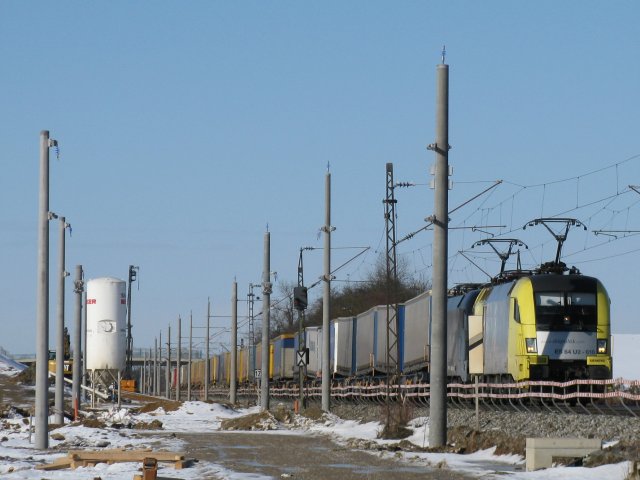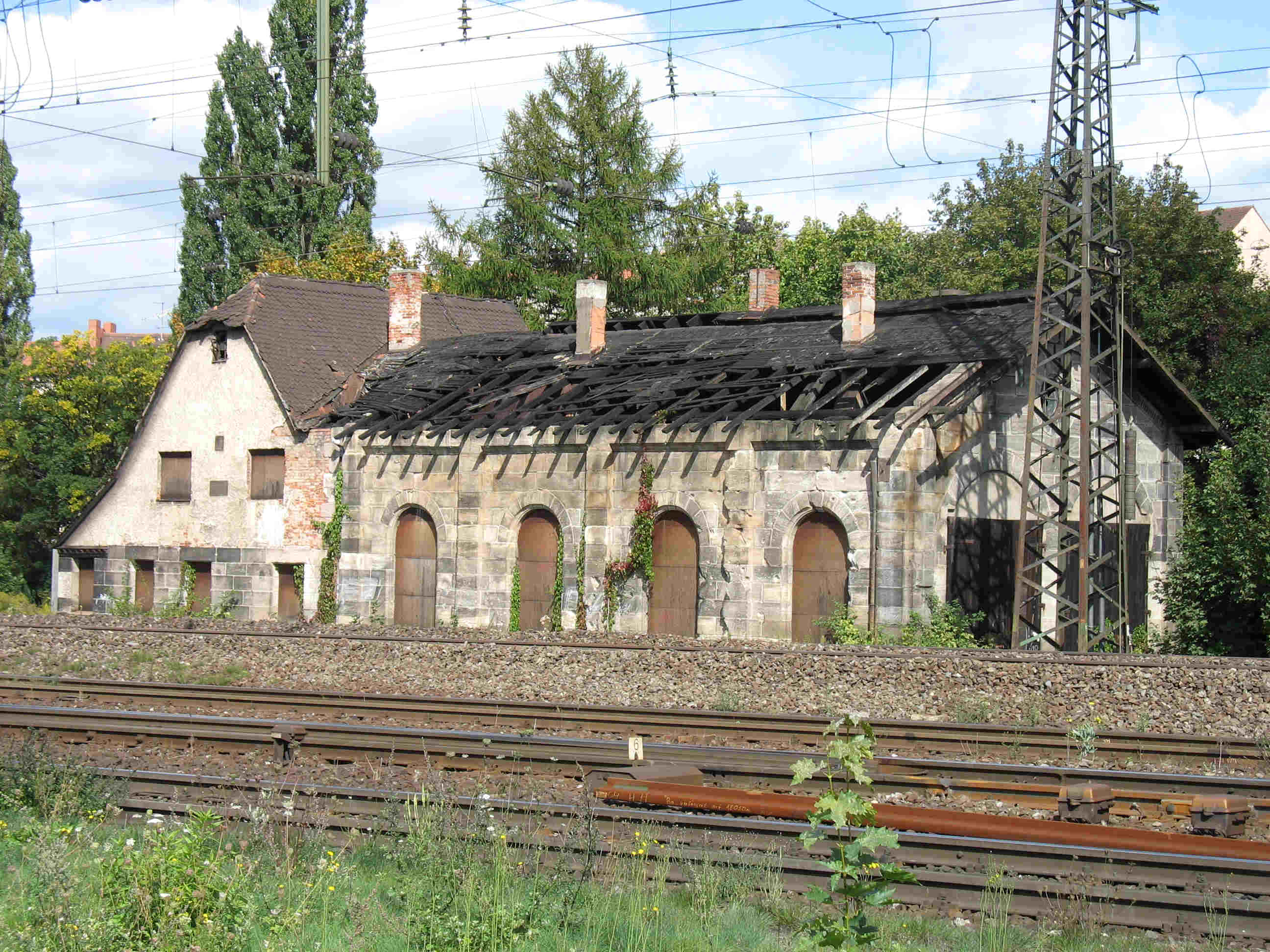|
Linienzugbeeinflussung
Linienzugbeeinflussung (or LZB) is a cab signalling and train protection system used on selected German and Austrian railway lines as well as on the AVE and some commuter rail lines in Spain. The system was mandatory where trains were allowed to exceed speeds of in Germany and in Spain. It is also used on some slower railway and urban rapid transit lines to increase capacity. The German Linienzugbeeinflussung translates to ''continuous train control'', literally: ''linear train influencing''. It is also called ''linienförmige Zugbeeinflussung''. LZB is deprecated and will be replaced with European Train Control System (ETCS) between 2023 and 2030. It is referenced by European Union Agency for Railways (ERA) as a Class B ''train protection system'' in ''National Train Control'' (NTC). Driving cars mostly have to replace classical control logic to ETCS ''Onboard Units'' (OBU) with common '' Driver Machine Interface'' (DMI). Because high performance trains are often not scrapped ... [...More Info...] [...Related Items...] OR: [Wikipedia] [Google] [Baidu] |
Train Protection System
A train protection system is a railway technical installation to ensure safe operation in the event of human error. Development Train stops The earliest systems were train stops, as still used by the New York City Subway, the Toronto subway, the London Underground, the Moscow Subway (only on the older lines) and the Berlin S-Bahn. Beside every signal is a moveable arm. If the signal is red, levers connected to valves on any passing train hit the arm, opening the brake line, applying the emergency brake, If the signal shows green, the arm is turned away from the levers and there is no contact. The Great Western Railway in the UK introduced its 'automatic train control' system in the early years of the 20th century. Each distant signal had before it a ramp between the running rails. If the signal showed green, the ramp was energised with a low voltage current which was passed to the locomotive when a shoe came into contact with the ramp. A bell rang in the locomotive's cab t ... [...More Info...] [...Related Items...] OR: [Wikipedia] [Google] [Baidu] |
European Train Control System
The European Train Control System (ETCS) is the signalling and control component of the European Rail Traffic Management System (ERTMS). It is a replacement for legacy train protection systems and designed to replace the many incompatible safety systems currently used by European railways. The standard was also adopted outside Europe and is an option for worldwide application. In technical terms it is a type of positive train control (PTC). ETCS is implemented with standard trackside equipment and unified controlling equipment within the train cab. In its advanced form, all lineside information is passed to the driver wirelessly inside the cab, removing the need for lineside signals watched by the driver. This will give the foundation for a later to be defined automatic train operation. Trackside equipment aims to exchange information with the vehicle for safely supervising train circulation. The information exchanged between track and trains can be either continuous or int ... [...More Info...] [...Related Items...] OR: [Wikipedia] [Google] [Baidu] |
Western Railway (Austria)
The Western Railway (german: Westbahn) is a two-track, partly four-track, electrified railway line in Austria that runs from Vienna to Salzburg Hauptbahnhof, Salzburg via St. Pölten Hauptbahnhof, St. Pölten and Linz Hauptbahnhof and is one of the major lines of Austria. It was originally opened as the ''Empress Elisabeth Railway'' in 1858 (Vienna–Linz). The line is owned and operated by Austrian Federal Railways (ÖBB). Routes The Western Railway consists of the double-track Old Western Railway (''Alten Westbahn'', line 1) and the double-track New Western Railway (''Neuen Westbahn'', line 30). For operational reasons the Western Railway is supplemented by the suburban track (line 23) from Vienna Hütteldorf to Unter Purkersdorf and the relief track (line 3) from Pottenbrunn via St. Pölten to Prinzersdorf. History The line was opened from Vienna Westbahnhof to Linz on 15 December 1858 and was extended to Salzburg on 1 August 1860. The continuation to Munich Hauptbahnhof, Mu ... [...More Info...] [...Related Items...] OR: [Wikipedia] [Google] [Baidu] |
DB Class 103
The Baureihe 103 is a class of electric locomotives in Germany, originally operated by Deutsche Bundesbahn. For a long period, they were perceived as flagships of the DB rolling stock. Development In the decades following World War II, the Deutsche Bundesbahn focused on purchasing a large number of standardised electric locomotives. The goal was to promote the electrification program and to replace older types of electric locomotives. A maximum speed of was deemed sufficient. With growing economic prosperity, competition with other means of transportation, especially automobiles, was increasing. During the 1950s, plans were made to enhance pre-war Class E 19 locomotives to have a top speed of , but the technical layout was out-dated and the braking system was deemed inefficient. The plans were revised to demand a top speed of , combined with a Co′Co′ wheel arrangement to limit the axle load to 18 tons. Elements of the new class, such as high speed bogies, were tested wi ... [...More Info...] [...Related Items...] OR: [Wikipedia] [Google] [Baidu] |
Munich–Augsburg Railway
The Munich–Augsburg line connects Munich and Augsburg in the German state of Bavaria. It was built by the Munich-Augsburg Railway Company and opened in 1840. It was nationalised in 1846 and extended to Ulm in 1854. The line between Augsburg and Munich is a major traffic axis and part of the Magistrale for Europe from Budapest through Vienna to Paris. History The line was built by the Munich-Augsburg Railway Company (German: ''München-Augsburg Eisenbahn-Gesellschaft'') and opened in 1839 and 1840. The Munich-Augsburg Railway Company was nationalised on 1 June 1846 and taken over by the Royal Bavarian State Railways (''Königlich Bayerische Staats-Eisenbahnen''). The line became part of Bavarian Maximilian’s Railway (''Bayerische Maximiliansbahn'') and was extended to Ulm on 1 May 1854. After the nationalisation of the line in 1846 a new Augsburg station was built at Rosenauberg along with new rail facilities in nearby Oberhausen. The old stations at the ''Roten Tor'' (R ... [...More Info...] [...Related Items...] OR: [Wikipedia] [Google] [Baidu] |
Nuremberg–Bamberg Railway
The Nuremberg-Bamberg line is a German railway connecting the Bavarian city of Nuremberg with Bamberg via Fürth, Erlangen, Forchheim. It is part of the northern section of the Ludwig South-North Railway. It runs along the Regnitz Valley and is one of the important German transport routes. Since 2010 line S1 of the Nuremberg S-Bahn uses the entirety of the line from Nuremberg to Bamberg. The line has become important for long-distance services since German reunification and this has increased since the opening of the Nuremberg–Erfurt high-speed line in 2017. As part of German Unity Transport Project No. 8 (''Verkehrsprojekts Deutsche Einheit Nr. 8''), it is being upgraded as an extension of the new line between Ebensfeld and Erfurt. It is mostly quadruple track with the exception of small sections in northern Fürth and south of Bamberg that are double track. History After the Bavarian parliament had passed a bill for the construction of the Ludwig South–North Railway on 2 ... [...More Info...] [...Related Items...] OR: [Wikipedia] [Google] [Baidu] |
CIR ELKE
CIR or Cir may refer to: Locations * Cairo Regional Airport, FAA/IATA code, CIR * CIR, station code for the Caledonian Road & Barnsbury railway station in the UK * Christmas Island Resort, a casino/resort in the northeastern Indian Oceans Organizations * Center for Individual Rights, a US non-profit public interest law firm * Center for Investigative Reporting, a nonprofit journalism organization * Christian Initiative Romero, a German non-profit organization supporting industrial law and human rights in Central America * Cosmetic Ingredient Review, a consumer safety group Politics and government * Commissioner of Internal Revenue, a US Treasury position * Committee on International Relations, renamed the United States House Committee on Foreign Affairs in 2007 * Comprehensive Immigration Reform Act of 2006, a US Senate bill * Convention of Republican Institutions, a defunct French political party * Citizen initiated Referendum, a type of referendum initiated by the signature o ... [...More Info...] [...Related Items...] OR: [Wikipedia] [Google] [Baidu] |
Wels
Wels (; Central Bavarian: ''Wös'') is a city in Upper Austria, on the Traun River near Linz. It is the county seat of Wels-Land, and with a population of approximately 60,000, the eighth largest city in Austria. Geography Wels is in the Hausruckviertel at an elevation of . From north to south, it extends over , from west to east over . 3.4% of the area is covered with forest, 23.5% is used for agriculture. The town comprises the following boroughs: Aichberg, Au, Berg, Brandln, Dickerldorf, Doppelgraben, Eben, Gaßl, Höllwiesen, Hölzl, Kirchham, Laahen, Lichtenegg, Mitterlaab, Nöham, Niederthan, Oberhaid, Oberhart, Oberlaab, Oberthan, Pernau, Puchberg, Roithen, Rosenau, Schafwiesen, Stadlhof, Trausenegg, Unterleithen, Waidhausen, Wels, Wimpassing, Wispl. History Prehistoric The area of Wels has been settled since the Neolithic era (between 3500 and 1700 B.C.E.), as evidenced by archaeological finds of simple tools, especially from around the banks of the Traun Riv ... [...More Info...] [...Related Items...] OR: [Wikipedia] [Google] [Baidu] |
Linz
Linz ( , ; cs, Linec) is the capital of Upper Austria and third-largest city in Austria. In the north of the country, it is on the Danube south of the Czech border. In 2018, the population was 204,846. In 2009, it was a European Capital of Culture. Geography Linz is in the centre of Europe, lying on the Paris–Budapest west–east axis and the Malmö–Trieste north–south axis. The Danube is the main tourism and transport connection that runs through the city. Approximately 29.27% of the city's wide area is grassland. A further 17.95% are covered with forest. All the rest areas fall on water (6.39%), traffic areas and land. Districts Since January 2014 the city has been divided into 16 statistical districts: Before 2014 Linz was divided into nine districts and 36 statistical quarters. They were: #Ebelsberg #Innenstadt: Altstadtviertel, Rathausviertel, Kaplanhofviertel, Neustadtviertel, Volksgartenviertel, Römerberg-Margarethen #Kleinmünchen: Kleinmünchen, Neue ... [...More Info...] [...Related Items...] OR: [Wikipedia] [Google] [Baidu] |
Seville
Seville (; es, Sevilla, ) is the capital and largest city of the Spanish autonomous community of Andalusia and the province of Seville. It is situated on the lower reaches of the River Guadalquivir, in the southwest of the Iberian Peninsula. Seville has a municipal population of about 685,000 , and a metropolitan population of about 1.5 million, making it the largest city in Andalusia, the fourth-largest city in Spain and the 26th most populous municipality in the European Union. Its old town, with an area of , contains three UNESCO World Heritage Sites: the Alcázar palace complex, the Cathedral and the General Archive of the Indies. The Seville harbour, located about from the Atlantic Ocean, is the only river port in Spain. The capital of Andalusia features hot temperatures in the summer, with daily maximums routinely above in July and August. Seville was founded as the Roman city of . Known as ''Ishbiliyah'' after the Islamic conquest in 711, Seville became ... [...More Info...] [...Related Items...] OR: [Wikipedia] [Google] [Baidu] |






